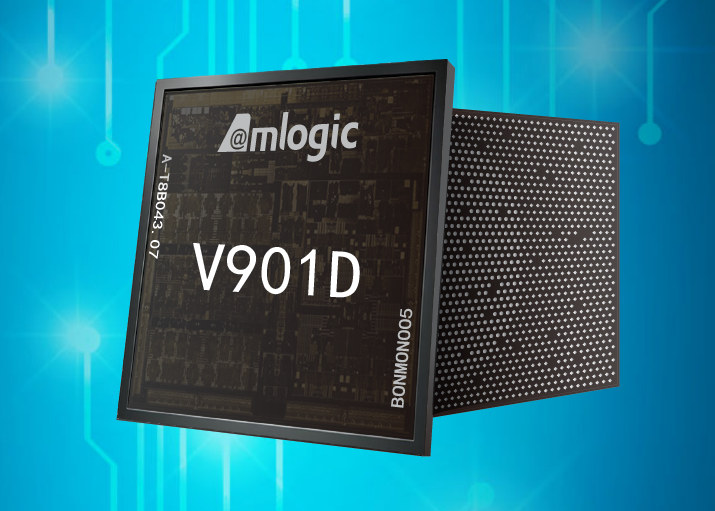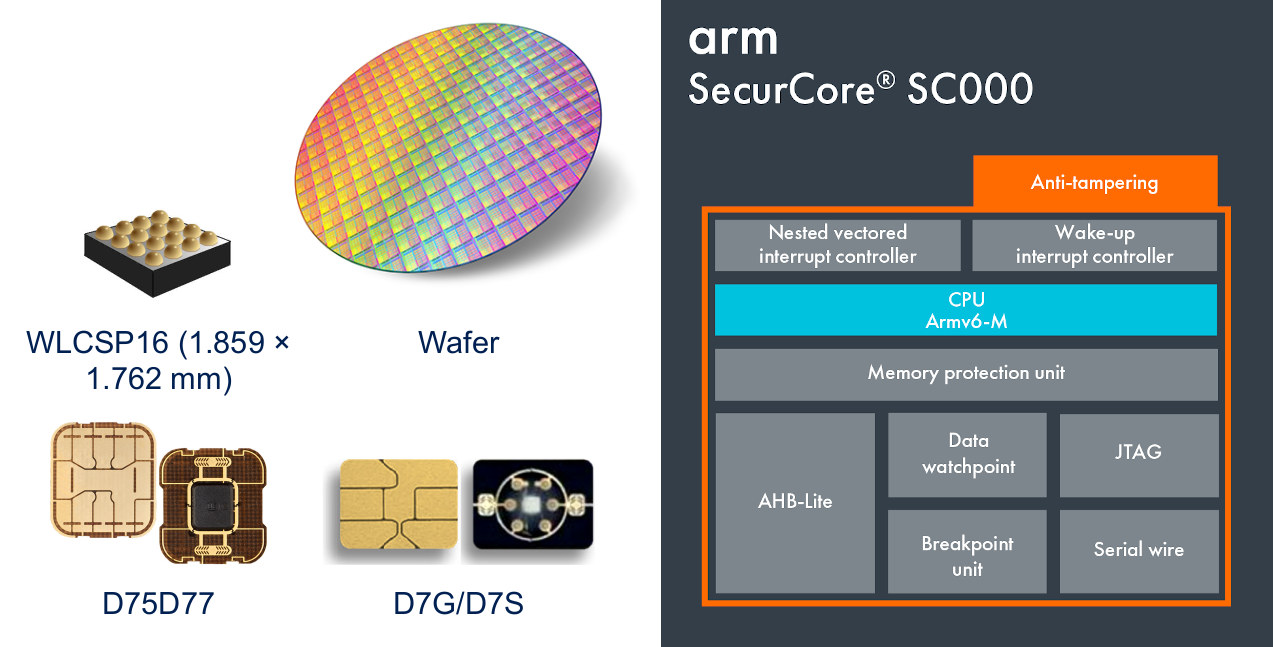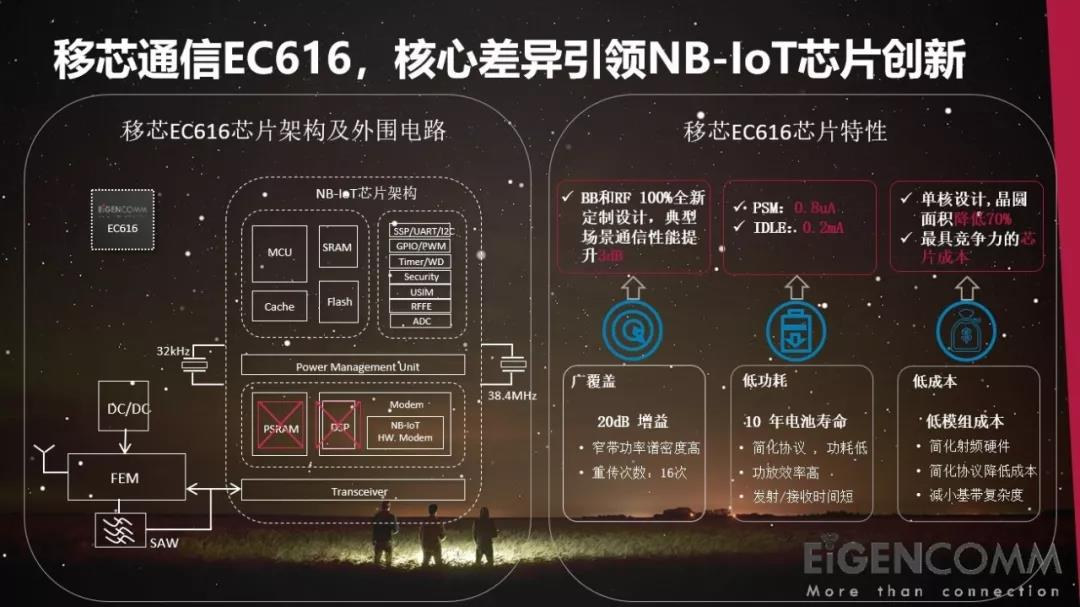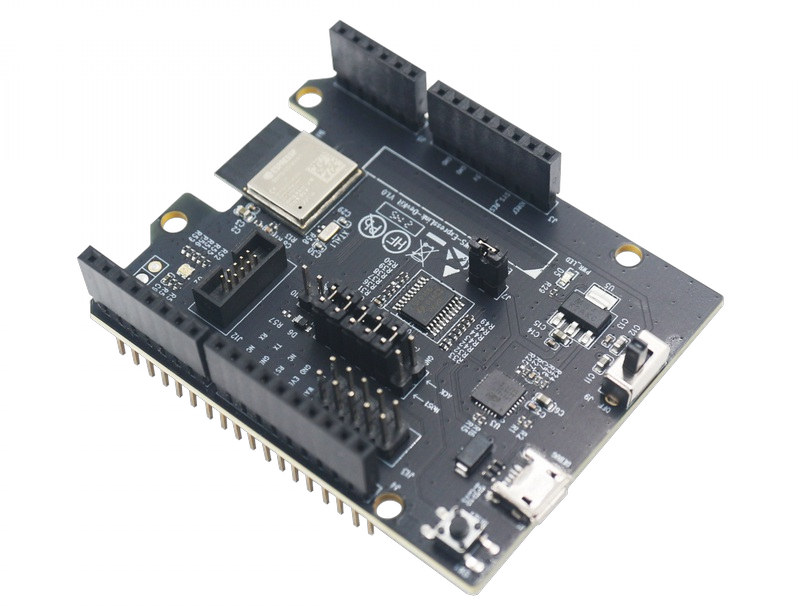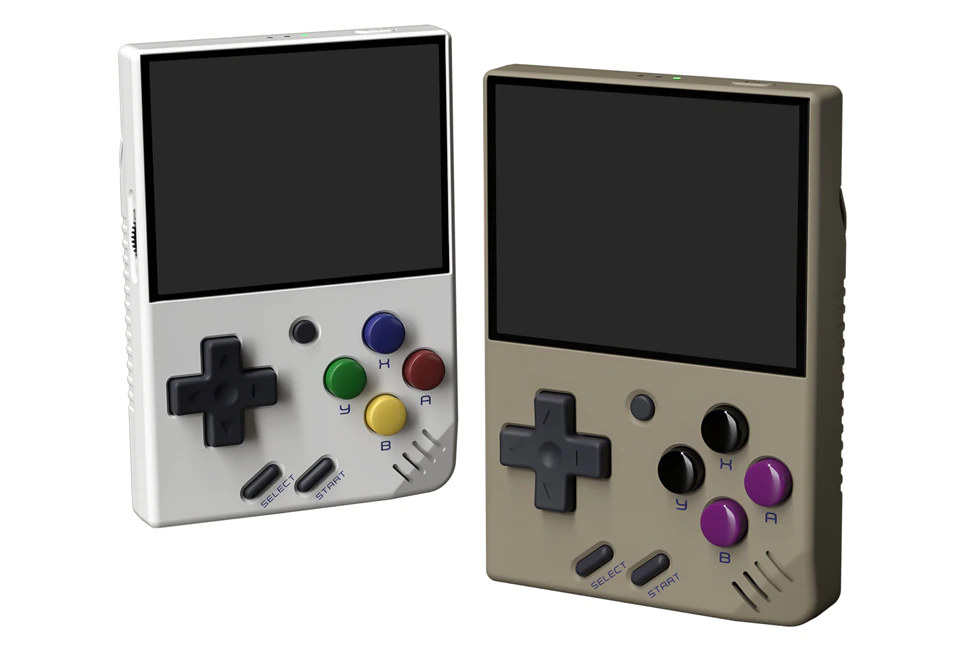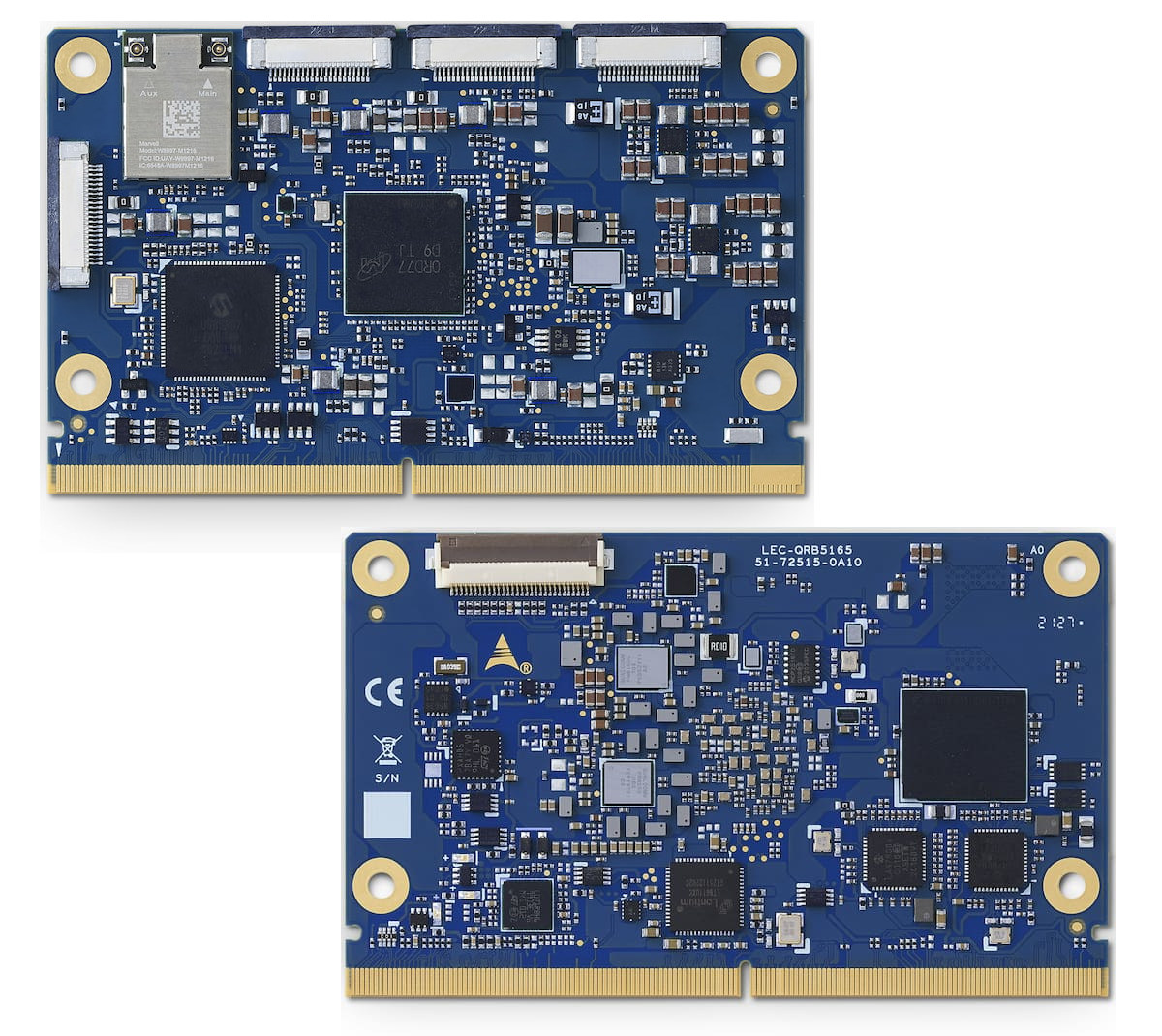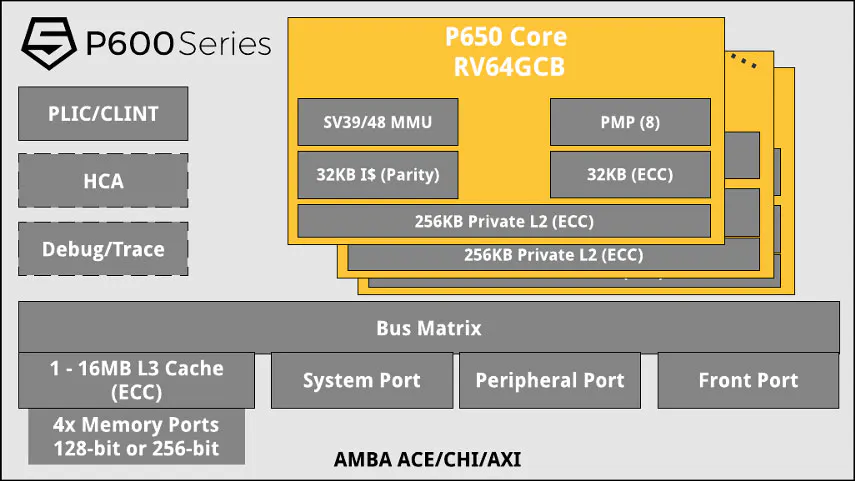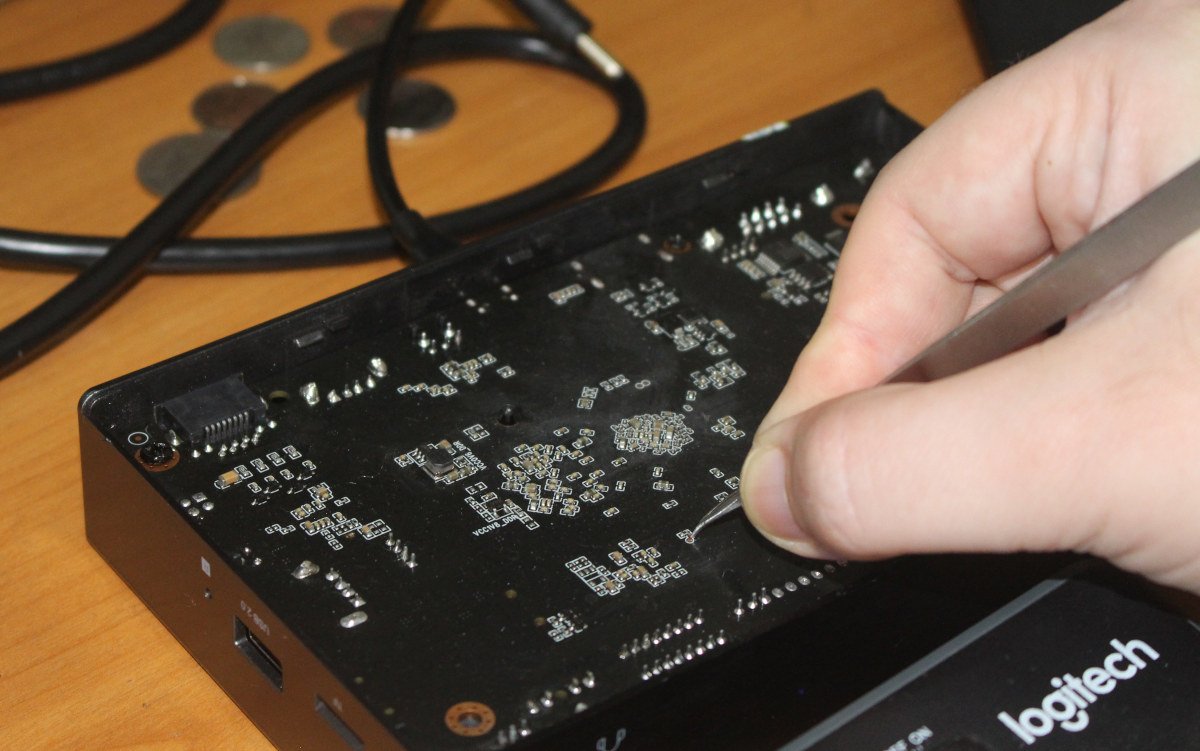Amlogic has decided to enter the automotive market with the Amlogic V901D quad-core Cortex-A55 processor designed for in-vehicle infotainment (IVI) applications such as car dashboards, multi-camera dashcam systems, automotive multimedia players, and so on. Also equipped with an Arm Mali-G31 MP2, a 1 TOPS NPU, support for 4K AV1 video decoding, and a 12nm manufacturing processor, Amlogic V901D may look like a rebranded Amlogic S905X4 at first glance, but as we’ll see below, it includes some features specific to the automotive infotainment market. Amlogic V901D specifications: CPU – Quad-Core Cortex-A55 GPU – ARM Mali-G31 MP2 AI accelerator – 1 TOPS NPU Memory I/F – 32-bit DDR3/4, LPDDR3/4 Storage I/F – eMMC 5.0, SLC NAND Video I/F Output – V-by-one, LVDS, CVBS, 4K TCON Input – 3x HDMI 2.1 w/ EMP (Extended Metadata Packet), ALLM, 2x CVBS Video Decoding – 4Kp60 10-bit AV1/H.265/VP9 P-2/AVS2, 4Kp30 H.264 Encoding – 1080p30 H.264 HDR […]
STMicro ST31N600 Arm SecurCore SC000 microcontroller includes biometric security, energy harvesting
Today, I’ve learned about an Arm core family I’d never heard about: the Arm SecurCore family for smartcard and embedded security applications. The Arm SecurCore SC000 (Cortex-M0 based) and Arm SecurCore SC300 (Cortex-M3 based) have been around for years, but they’ve just been brought to my attention with STMicro ST31N600 secure microcontroller announcement. Manufactured with STMicro’s 40nm eSTM technology, the ST31N600 is designed for contact and contactless payment cards, ID cards, and transport ticketing thanks to circuitry for energy harvesting, and support for EMV ISO 7816, ISO 14443, and ISO 18092 standards. STMicro also introduced ST31N500 and ST31N400 microcontrollers with less flash memory, but other the same specifications as ST31N600: MCU Core – Lockstep 32-bit Arm SecurCore SC000 up to 60 MHz Memory – 16 KB of user RAM Storage with 25-year retention, 500,000 erase/write cycle endurance ST31N600 – 608 KB ST31N500 – 512 KB ST31N400 – 416 KB RF […]
Eigencomm EC616/EC616S SoC supports Cat-NB2 cellular IoT
Eigencomm EC616/EC616S are Cortex-M3 microcontrollers supporting the 3GPP R13/R14 NB-IoT standard, with 3GPP R14 notably introducing the newer LTE Cat-NB2 standard allowing higher bitrates up to 127 kbps downlink, and up to 159 kbps uplink, and OTDOA and E-CID positioning methods. Both EC616 and EC616S are virtually identical, but the EC616S comes with fewer GPIOs and is designed for the lowest possible BoM cost for modules as small as 10×10 mm. Both target similar IoT applications such as wireless meter reading, smoke detection, smart street lights, smart logistics, asset tracking, smart fire monitoring, smart parking, smart home, wearable devices, industry 4.0, smart agriculture, and others. Eigencomm EC616/EC616S specifications: MCU core – Arm Cortex-M3 @ up to 204 MHz Frequency band – 663 MHz to 2200 MHz Protocol version – 3GPP R13/R14 Built-in PA output power – 23dBm Receiver sensitivity – EC616: -118 dBm, EC616S: -117 dBm Peripherals EC616 – 2x […]
ESP32-C3 AWS IoT ExpressLink module & devkit aim to ease connection to AWS IoT services
Amazon and Espressif have launched another wireless module with the ESP32-C3 AWS IoT ExpressLink module together with a development kit supporting out-of-the-box AWS IoT connectivity, following their earlier collaboration with the launch of the ESP32-PICO-V3-ZERO Alexa Connect Kit Module last summer. Also called the “ESP32-C3-MINI-1-N4-A”, the ESP32-C3 AWS IoT ExpressLink module implements the AWS IoT ExpressLink specification and provides AWS IoT Core connectivity to a host MCU via AT commands over a UART interface. Pre-provisioned and pre-programmed with ease integration the module supports WiFi configuration, messaging, OTA, and device management. The compact (16.6 x 13.2mm) ESP32-C3 module is currently offered as part of the ESP32-C3-AWS-ExpressLink-DevKit development board following the Arduino Zero board form factor allowing it to be plugged into the Arduino board, or easily connect to other host systems such as the Raspberry Pi. The goal is to simplify the deployment of IoT solutions removing the need for […]
Portable game console runs RetroArch on SigmaStar SSD202D processor
SigmaStar SSD202D “Smart Display” dual-core Cortex-A7 processor has found its way into the MIYOO mini portable game console compatible with RetroArch Linux distribution. Initially designed for industrial smart displays or other HMI applications, we’ve already seen the low-cost Arm Linux processor with 64MB (SSD201) or 128MB (SSD202D) memory has been integrated into a gateway, a single board computer, and M5Stack UnitV2 AI camera devkit, but somehow, it’s now gone into a consumer device. MIYOO mini portable game console specifications: SoC – SigmaStar SSD202D dual-core Cortex-A7 processor @ 1.2 GHz with 2D GPU, 128MB DDR3 (Note: no GPU) Storage – 32GB MicroSD card Display – 2.8-inch IPS screen with 640×480 resolution Audio – 3.5mm audio jack User input – D-PAD, Menu, Select and Start buttons, ABXY buttons, R/R2 and L/L2 buttons at the back USB – 1x USB-C port Misc – Power button, Vibration motor, LEDs Battery – 3.7V/1,900mAh battery good […]
ADLINK LEC-RB5 – A Qualcomm QRB5165 SMARC module designed for drones and robots
ADLINK Technology LEC-RB5 is a SMARC compliant system-on-module powered by the Qualcomm QRB5165 octa-core Cortex-A77 class processor which we’ve already seen in Qualcomm Flight RB5 high-end drone reference design and Lantronix Open-Q 5165RB system-on-module designed for robotics applications. The LEC-RB5 SMARC module ships with up to 8GB PoP LPDDR4 memory, 256GB UFS storage, provides on-device artificial intelligence capabilities (up to 15 TOPS), support for up to 6 cameras, and low power consumption. The main target applications are high-end robots and drones in the consumer, enterprise, defense, industrial, and logistics sectors. LEC-RB5 SMARC SoM specifications: SoC – Qualcomm QRB5165 octa-core Kryo 585 processor with a Kryo Gold Prime @ 2.84 GHz, 3x 3 Kryo Gold @ 2.42 GHz, 4x Kryo Silver @ 1.81 GHz, Adreno 650 GPU @ up to 587 MHz, Video decode HW acceleration for H.265/HEVC, H.264, MPEG2, MVC, VC-1, WMV9, JPEG/MJPEG, VP8, VP9, video encode HW acceleration for […]
SiFive Performance P650 RISC-V core to outperform Arm Cortex-A77 performance per mm2
About six months have passed since the SiFive announcement of the Performance P550 “fastest 64-bit RISC-V processor” ever, and the company has now introduced an even faster RISC-V core with the Performance P650 that’s expected to match Cortex-A77 performance. Building upon the Performance P550 design, the SiFive Performance P650 is scalable to sixteen cores using a coherent multicore complex, and delivers a 40% performance increase per clock cycle based on SiFive engineering estimated performance in SPECInt2006/GHz, thanks to an expansion of the processor’s instruction-issue width. The company compares P650 to the Arm family by saying it “maintains a significant performance-per-area advantage compared to the Arm Cortex-A77”. SiFive Performance P650 key features: 64-bit RISC-V (RV64GCB) core Sv39/Sv48 Virtual Memory Support Multi-core, multi-cluster processor configurations with up to 16 cores Performance > 11 SpecINT2006/GHz Thirteen stage, four-issue, out-of-order pipeline tuned for scalable performance Private L2 Caches and Streaming Prefetcher for improved memory […]
Tribulations with Linux on Zidoo M6 Rockchip RK3566 mini PC
After our review of the Zidoo M6 mini PC with Android 11, we’ve installed Linux on the Rockchip device, and we did boot to a Linux Qt user interface built with buildroot. Let’s try to see what we can do with the image, and then try Ubuntu from a competing mini PC to check out if that can work. Since there’s no package manager to install a screenshooting program, I tried to use the usual method to take a framebuffer screenshot.
|
1 |
cat /dev/fb0 > screen.raw |
It generated an 8MB file which looked good, but the content was just comprised of zeros.
|
1 2 3 4 5 6 |
$ ls -lh screen.raw -rw-r--r-- 1 jaufranc jaufranc 8.0M Nov 13 15:08 screen.raw $ hexdump screen.raw 0000000 0000 0000 0000 0000 0000 0000 0000 0000 * 07e9000 |
I asked Zidoo for a method to take screenshots in their Linux image, but I was told there weren’t any at this time… No worries, let’s try some of the applications in the Qt interface starting with the Multivideoplayer: It starts well with 9 videos of Big Buck Bunny playing simultaneously, […]


